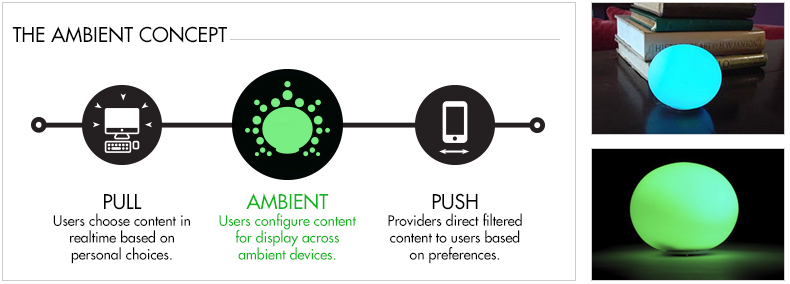Imagine… An era of hyperconnection where by 2020, 50 billion terminals will be online, offering us an environment saturated with interactive technologies, plunging us into a daily life of technical intrusion and the “cult of urgency”. .
In response to the unbridled acceleration of production and consumption, followers of “soft technology” organize themselves by proclaiming loud and clear that time has a value, by imagining objects and design processes, highlighting the virtues of slowness, calm and durability.
This contrarian philosophy is commonly referred to as “Slow design” . At the origin of this movement Slow food, created in opposition to fast food: it was a question of taking back time. Subsequently, the concept was extended to many subjects such as decoration, the art of living... Little by little, the notions of design, ergonomics and aesthetics invaded the banality of our digital daily life, but too much wanting the aesthetics of our environment, the term design is corrupted. Today Slow design would be the way to go, like a return to simple things.
This philosophy was first defined in 2002 by the English academic Alastair Fuad-Luke, specializes in the environment, eager to create a clever balance between socio-cultural needs; personal commitment to an object and finally the impact it may have on our environment. Slow down to perceive the value of time, think better, be truly present with those around us, rethink the environment, the objects, the interfaces that allow users to “breathe” are the goal of Slow design designers.
“The important waves of technological change are those that fundamentally alter the place of technology in our lives. What matters is not technology itself, but its relationship to us”
The first principle of Slow design is above all to federate all the practices from the different fields of creation to define a new approach to information., where the interaction between the user and their technology is designed to occur in the periphery of the user rather than constantly at the center of their attention.

1995 in the Tangible Media Group directed by Professor Hiroshi Ishii focuses its research on the field of experimentation aimed at highlighting the impact of technologies on human behavior and capacities. Through numerous experiments Hiroshi Ishii demonstrates that the interaction with digital information through the physical environment proves more promising for the evolution of the user experience.
Evidenced by the first projects of the Tangible Media Group: ClearBoard or even audiopad.
[Vimeo 44544588 w = h = 425 350]
They define the basics of the language of tangible user interfaces (TUI) in connection with the user through certain types of experimentation which explore the possibilities of access to software functions by detecting movement, sound, shape recognition and manipulation of objects equipped with responsiveness thanks to video capture. As a result, it is one of the most promising laboratories thanks to their ideas and achievements combining design, multimedia and technology.
In the same register of technological evolution: The Company Ambient Device who imagined a connected object allowing to give information on several levels of reading thus perfectly illustrating the philosophy of Slow design. The screen is able to offer different information depending on the distance at which we are from it: when we are far away, it uses color and displays very large characters to indicate the temperature, for example. When you get closer, it displays the outside temperature in a smaller size, and when you touch it, you can read the information in more detail.

So that technology becomes a carrier of information and appeasement, it is therefore necessary to surf on a simple and effective approach to design in terms of understanding, with techniques such as flat design, work on typography, the interaction of movement on connected or tactile objects... So many ways to make people feel information in the moment, adapted to different needs and at different paces.
The object adapts to the user's needs and not the other way around.
If the notion of slow-design seems utopian for some, it is nevertheless developing more and more in our daily technological life, highlighting a real desire to change the user experience. We find it in the return to simple things, in the growing demand for quality and well-being to the detriment of the material and the superficial. Due to being a relatively new notion, the implications of slow design are still far from being defined and remain to be explored.
Carine Renaud, UX-Evangelist @CarineWhatElse - UXLab Foundation @UX-Republic
UX/UI ECO-DESIGN # Paris
SMILE Paris
163 quay of Doctor Dervaux 92600 Asnières-sur-Seine
DESIGN THINKING: CREATING INNOVATION # Belgium
UX-REPUBLIC Belgium
12 avenue de Broqueville - 1150 Woluwe-Saint-Pierre
MANAGING AND MEASURING UX # Paris
SMILE Paris
163 quay of Doctor Dervaux 92600 Asnières-sur-Seine
DESIGN SPRINT: INITIATION & FACILITATION # Paris
SMILE Paris
163 quay of Doctor Dervaux 92600 Asnières-sur-Seine
UX-DESIGN: THE FUNDAMENTALS # Belgium
UX-REPUBLIC Belgium
12 avenue de Broqueville - 1150 Woluwe-Saint-Pierre
GOOGLE ANALYTICS 4 #Paris
SMILE Paris
163 quay of Doctor Dervaux 92600 Asnières-sur-Seine
ACCESSIBLE UX/UI DESIGN # Belgium
UX-REPUBLIC Belgium
12 avenue de Broqueville - 1150 Woluwe-Saint-Pierre
EXPERIENCE MAPPING # Paris
SMILE Paris
163 quay of Doctor Dervaux 92600 Asnières-sur-Seine












